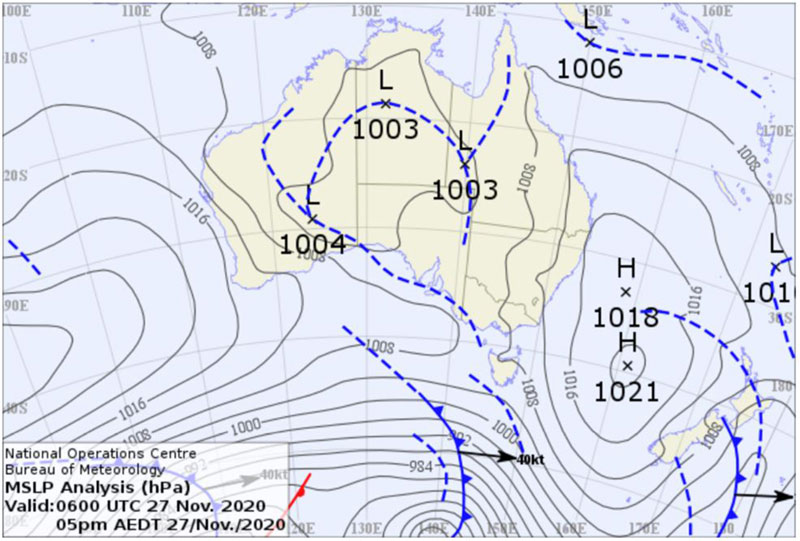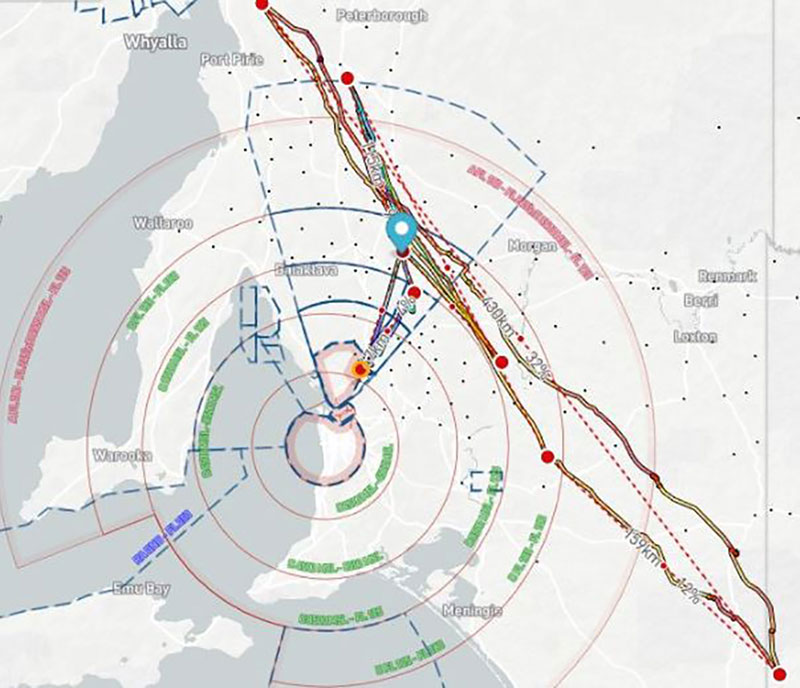A number of people have offered congratulations on my flight, to which I’ve responded, “It’s just a matter of being in the right place at the right time.” That is true, but it takes a lot of planning to be in the right place at the right time.

Pete's view of the line of clouds up to 15,000ft along the trough / convergence line.
By Pete Temple
Gawler is only 22km from the coast, which is good for long distance flights since the thermals start and finish early, but you can glide home from a long way out late in the day. Our playground is typically north along the ranges or east out past the Murray River to Waikerie and beyond.
On this day, the maximum temperature was 44° C, unusually warm for spring, with an almost stationary trough running from central Australia to Tasmania. We get these conditions several times each summer but rarely this early in the season. Thermals are enhanced by the trough but also the local geography provides a sea breeze front that can be more than 500km long. When these two effects are aligned, soaring conditions can be outstanding.
Planning for such a flight is much easier than it used to be with tools like SkySight. I find that SkySight is particularly good at forecasting convergences, such as occurred along the trough and sea breeze on this day. I spent many hours studying the optimal route. I had to time arriving at a restricted airspace boundary after it was deactivated but, making distance faster than planned, I actually arrived two minutes early and had to wait. I was forced to go into wind first in scrappy low conditions due to airspace restrictions and the forecast for a late start to the thermals east of the ranges.

The prognistic chart showing the trough line extending from WA through to Tasmania.
The 40 km/hr headwind seriously slowed the first leg and it took me 2.5 hours to fly the first 150 km. But then I connected with the first cumulus on the convergence line and never looked back. I spent six hours above 10,000ft and rarely thermalled while cruising at 90kts. The stats show 5% circling even though the thermals were only 4 to 8kts.
I flew down as far as I dared into Victoria, which was locked down due to COVID-19, and then took a long 430km leg to near Port Augusta – flying along the convergence with cloud base at 15,000ft. To paint a picture… it’s blue to the west of the convergence in the sea air, a highway in the sky of fantastic cumulus at the convergence and then scattered cumulus inland to the east.

The route Pete flew.
Finding the best line of lift is not always straightforward but, from past experience, I knew to avoid the best looking cumulus on the edge and track under the overdevelopment further inland. This worked like a charm and I was generally in netto rising air of between 2 and 6kts the whole way.

Convergence and Track in SkySight.
Then it was south again along the same line for a magic time before turning for Gawler to arrive before last light after flying 1312 km. I love long final glides at that time of the evening – cruising at 100kts with just a gentle whistle in smooth air without a ripple. What a day to be a glider pilot.
Why not come to Gawler and give our amazing conditions a try?































